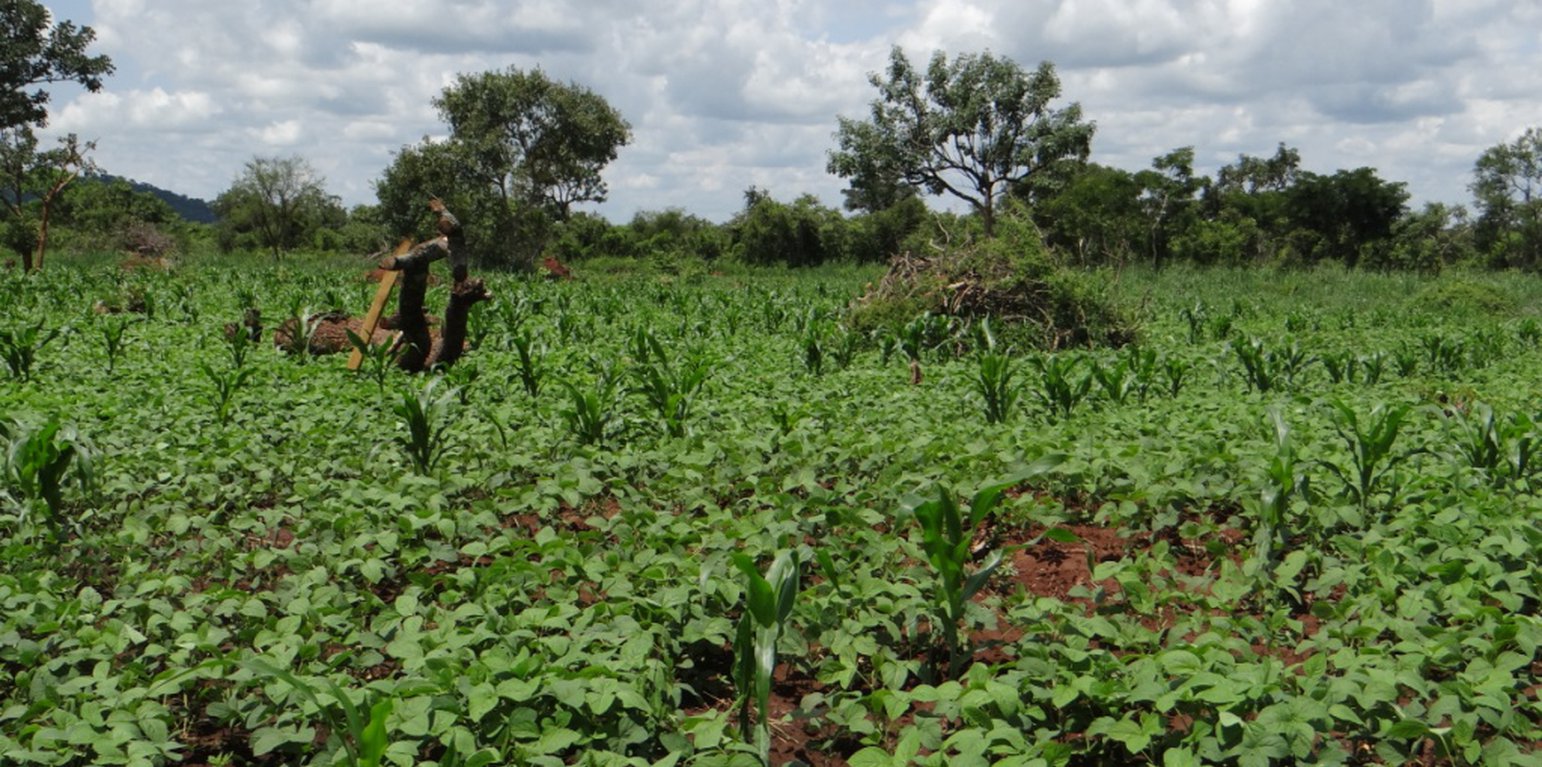



Inter cropping is a practice where farmers cultivate two different crops in the same field. Usually, a leguminous crop (Soybean) is planted with a non-leguminous crop (Maize). The leguminous crop helps to fix nitrogen in to the soil; produce nitrogen generated from the decomposition of the rich crop residues, and adds nutrient to the soil. This in turn reduces the net demand for fertilizers based on nitrogen. The farmer planted soybean variety Maksoya 3N with a yield potential of 3,500 kg/ha; at a spacing of 10cm × 30cm with 2 seeds per hole and at a seed rate of 20 - 25 kg/acre. Longe 7H Maize variety was then sparsely inter-planted at a spacing of 30cm x 10m with 3 seeds per hole; in between the soybean.
Intercropping Maize and soybean is particularly important because soybean is mainly a cash crop and thus act as a source of income while the maize provides food for the household. If one crop fails, the other may survive hence acts as insurance against crop failure. Planting two crops in a field also reduces the workload associated with cultivating each crop in separate fields. The root systems of the two crops are at different soil layers hence competition for nutrients and water is minimal.
A good intercrop has the main crop and the minor crop. The main crop usually has the recommended seed rate of mono crop while the minor crop may be planted depending on its relative importance and effect on the main crop. However, in intercropping system, the yield potentials of each of the crops is realized.
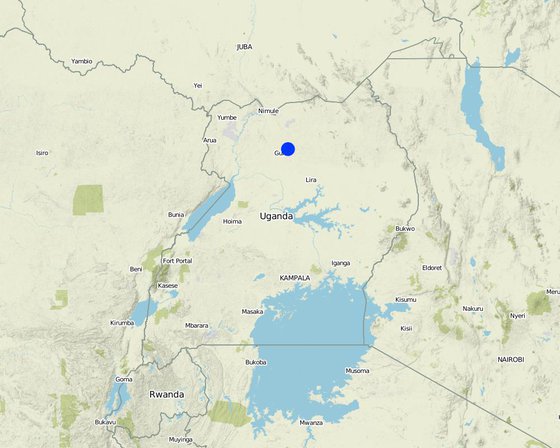
الموقع: Gulu District, Northern Region,Uganda, اوغندا
عدد مواقع تنفيذ التقنيةالتي تم تحليلها: موقع واحد
انتشار التقنية: يتم تطبيقها في نقاط محددة/ تتركز على مساحة صغيرة
في منطقة محمية بشكل دائم؟:
تاريخ التنفيذ: 2014; منذ أقل من 10 سنوات (مؤخرًا)
نوع التقديم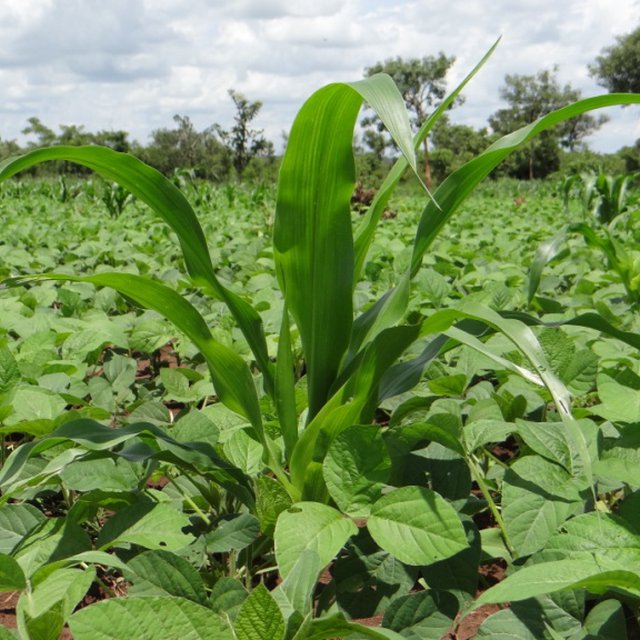






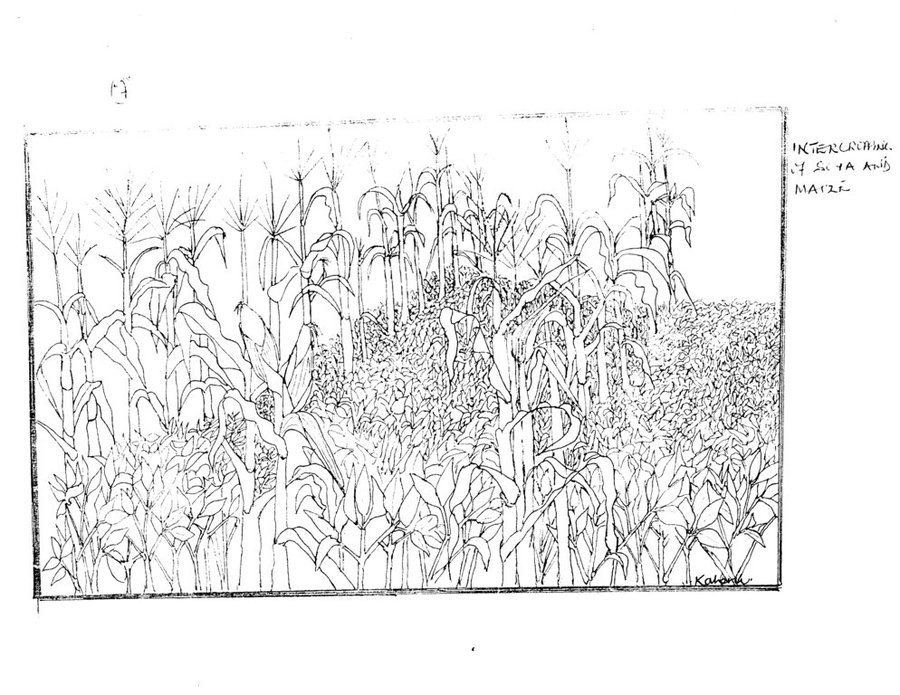
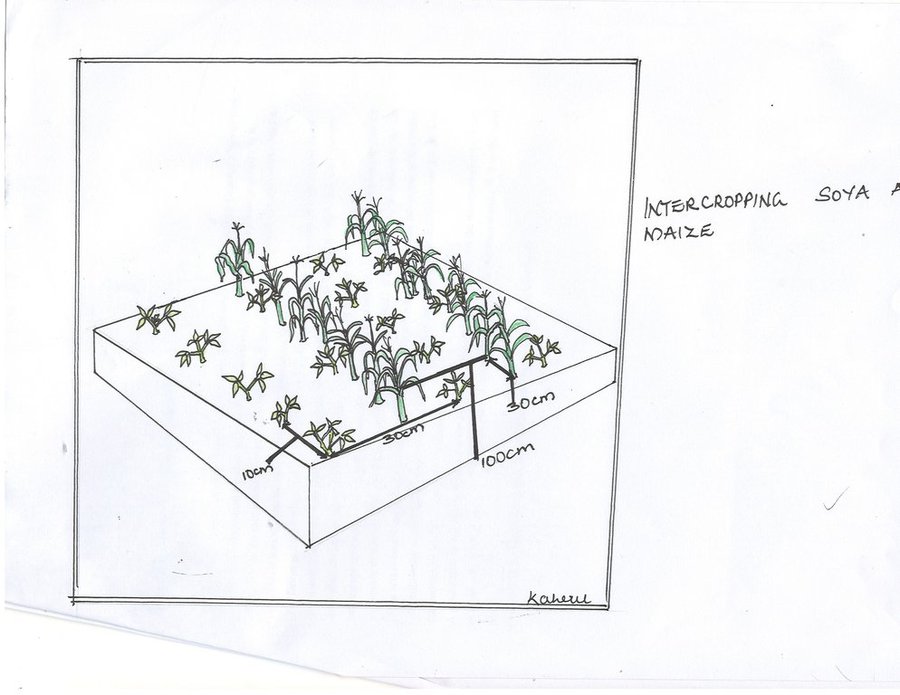
| تحديد المدخلات | الوحدة | الكمية | التكاليف لكل وحدة (UGX) | إجمالي التكاليف لكل مدخل (UGX) | % من التكاليف التي يتحملها مستخدمو الأراضي |
| العمالة | |||||
| Labour for planting land | persons | 5,0 | 5000,0 | 25000,0 | 100,0 |
| labour for applying seed | Persons | 5,0 | 5000,0 | 25000,0 | 100,0 |
| معدات | |||||
| Hoe | Pieces | 4,0 | 10000,0 | 40000,0 | 100,0 |
| Watering can | Pieces | 4,0 | 100000,0 | 400000,0 | 100,0 |
| Slasher | Pieces | 3,0 | 7000,0 | 21000,0 | 100,0 |
| المواد النباتية | |||||
| Soya bean | kgs | 120,0 | 2500,0 | 300000,0 | 100,0 |
| Maize seeds | kgs | 5,0 | 2000,0 | 10000,0 | 100,0 |
| إجمالي تكاليف إنشاء التقنية | 821'000.0 | ||||
| تحديد المدخلات | الوحدة | الكمية | التكاليف لكل وحدة (UGX) | إجمالي التكاليف لكل مدخل (UGX) | % من التكاليف التي يتحملها مستخدمو الأراضي |
| العمالة | |||||
| labour | Persons | 10,0 | 5000,0 | 50000,0 | 100,0 |
| إجمالي تكاليف صيانة التقنية | 50'000.0 | ||||
الكمية قبل الإدارة المستدامة للأراضي: 0.5 bag
الكمية بعد الإدارة المستدامة للأراضي: 3 bags
Increased yield from soya and maize compared to before the technology.
Crops grow vigorously, good pod filling.
In case of one crop failure the other crop the other crop survives.
الكمية قبل الإدارة المستدامة للأراضي: 1 crop
الكمية بعد الإدارة المستدامة للأراضي: 2 crops
More than one crop in the field.
Due to intercropping.
especially on seeds and labour
Maize stalks and soya wastes are left in the garden to provide mulch after decomposition.
The leguminous crop helps to fix nitrogen into the soil; produce nitrogen generated from the decomposition of the rich crop residues, and adds nutrient to the soil.